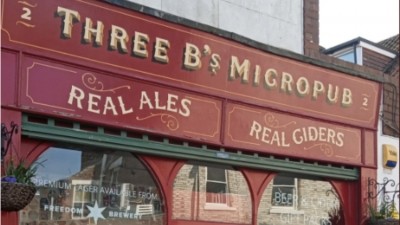On-trade visits in decline but average spend up

Attributed to the cost-of-living crisis, Lumina's Eating and Drinking Out Panel (EDOP) report showed weekly eating and drinking out occasions had declined 6.7% year-on-year during this period.
While the frequency of eating out occasions was in decline, the figures showed participation and spend rates had increased.
Participation levels stood at 57% this year, vs 55% last year, while spend was up £0.28, from £10.75 last year to £11.03.
Out and about
In addition, pubs were also cited as the third most popular setting for eating out occasions after coffee shops and quick service restaurants (QSR), accounting for 14.1% of the total market.
Comparatively, coffee and sandwich shops, which were the most popular, accounted for 29.7% of the total market.
Total market penetration increased by 2 percentage points, with 57% of UK adults having visited on-trade settings to eat or drink during this period, reflecting a return to pre-pandemic norms, the report explained.
Looking at dayparts, dinner occasions accounted for 28% of eating out occasions, a 1.4 percentage point decline compared with last year. However, this benefited other dayparts.
The report said: “This is in part driven by recovery in day-time occasions with more consumers out and about as well as a consumer effort to reduce out of home occasions at the most expensive day-part.”
Impact on average spend
Breakfast and lunch accounted for 3.9% and 26.9% respectively compared with 3.4% and 26.4% during the same period in 2022.
Additionally, drink only occasions saw growth of 0.5%, from 24.8% to 25.3% in the 4-weeks to 19 March 2023, while the snack and brunch categories saw declines of 0.4% and 1.1% respectively.
This comes as the most recent Quarterly Report from Lumina showed value for money saw the largest increase as a reason for choosing an establishment for breakfast and lunch occasions, up 3pp and 2pp respectively.
The EDOP report stated: “Re-alignment of day-part shares has impacted average spend growth year-on-year. Spend growth is just 2.6%, notably behind inflation figures.”







